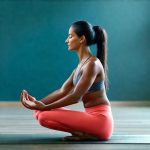Bladder tension—that persistent feeling of urgency, frequency, or even discomfort around your bladder—can significantly impact daily life. It’s often linked to stress, muscular imbalances in the pelvic floor, and a disconnect between mind and body. Many people unknowingly hold tension in their abdominal muscles and pelvic region, exacerbating these issues. Conventional approaches sometimes focus solely on strengthening exercises, but overlooking the importance of gentle release and mindful movement can hinder progress. This is where yoga, specifically gentle yoga practices, offers a powerful alternative or complement to traditional therapies.
Gentle yoga isn’t about achieving complex poses or pushing physical limits; it’s about cultivating awareness, releasing tension, and restoring balance within the body. It acknowledges the intricate connection between breath, movement, and emotional state, recognizing that stress and anxiety often manifest physically as tightness in the pelvic floor and surrounding muscles. By incorporating gentle stretches, restorative postures, and mindful breathing techniques, we can begin to unravel these patterns of tension and promote a sense of calm and well-being. This article will explore how specific yoga practices can help alleviate bladder tension and support overall pelvic health, focusing on accessible techniques you can incorporate into your routine.
Understanding the Connection: Bladder Tension & The Body
The relationship between bladder tension and physical tension is profound. Often, what feels like a bladder problem isn’t solely in the bladder itself but rather a result of surrounding muscular imbalances. Consider this: chronic stress leads to habitual tightening of muscles – particularly in the abdomen, hips, and pelvic floor. This tightness can directly compress the bladder, reducing its capacity and increasing the sensation of urgency. Furthermore, tension in these areas can interfere with proper nerve function, contributing to involuntary contractions or spasms. If you’re experiencing persistent issues, understanding how uroflowmetry helps assess bladder strength might be a helpful next step.
- A tight pelvic floor doesn’t necessarily mean a strong pelvic floor; it often means an overactive one.
- Chronic tension restricts blood flow, hindering healing and optimal function.
- The diaphragm, essential for breathing, is intimately connected to the pelvic floor. Shallow breathing patterns contribute to increased intra-abdominal pressure, further stressing the bladder.
Gentle yoga addresses these issues by promoting relaxation and restoring balance. It encourages mindful movement that helps release tension without force, allowing muscles to lengthen and regain their natural range of motion. The focus on diaphragmatic breathing also reduces stress levels and supports healthy pelvic floor function. This holistic approach tackles the root causes of bladder tension, rather than simply masking the symptoms. For those looking for broader preventative measures, exploring movement breaks that prevent bladder tightness can be a proactive step.
Gentle Yoga Poses for Bladder Support
Several yoga poses are particularly beneficial for those experiencing bladder tension. These aren’t about striving for perfection but about finding gentle variations that feel comfortable and supportive for your body. Restorative postures, in particular, are incredibly valuable as they allow the nervous system to calm down and muscles to release without effort.
One excellent starting point is Supported Child’s Pose. Using a bolster or pillows under your chest and head can create a deeply relaxing experience. Another pose is Legs-Up-The-Wall (Viparita Karani). This simple posture encourages venous drainage, reducing swelling in the pelvic region and calming the nervous system. Gentle hip openers like Reclined Butterfly (Supta Baddha Konasana) are also helpful for releasing tension in the hips and lower back, which can directly impact bladder function. Remember to listen to your body and modify poses as needed. Never push yourself beyond a comfortable range of motion.
It’s important to note that consistency is key. A short, regular practice (even 10-15 minutes daily) is more beneficial than a long, infrequent one. Incorporating these gentle postures into your routine can gradually release tension and promote lasting relief. The combination of mindful movement and deep breathing creates a powerful synergy for restoring pelvic health. To further support overall well-being, consider how deep rest enhances bladder regulation alongside your yoga practice.
Breathing Techniques & Bladder Control
Diaphragmatic breathing – often called belly breathing – is fundamental to yoga and incredibly effective for managing bladder tension. Many people unknowingly breathe shallowly from their chest, which activates the sympathetic nervous system (the “fight or flight” response) and increases stress. Diaphragmatic breathing, conversely, stimulates the parasympathetic nervous system (the “rest and digest” response), promoting relaxation and reducing anxiety.
Here’s a simple exercise to practice:
1. Lie on your back with knees bent and feet flat on the floor.
2. Place one hand on your chest and the other on your abdomen.
3. Inhale deeply through your nose, allowing your abdomen to rise while keeping your chest relatively still.
4. Exhale slowly through your mouth, feeling your abdomen fall.
Repeating this exercise for several minutes can help calm the nervous system and reduce bladder urgency. Additionally, Ujjayi breath (ocean breath) – a gentle constriction in the back of the throat during breathing – adds another layer of calming effect. This type of focused breathing encourages mindful awareness and helps regulate the body’s response to stress. Learning how to rehydrate without flooding the bladder can also complement these techniques, especially if you experience urgency after drinking fluids.
Mindful Movement & Pelvic Awareness
Gentle yoga isn’t just about physical postures; it’s also about cultivating interoception – your ability to sense what’s happening inside your body. This heightened awareness allows you to recognize early signs of tension and proactively address them before they escalate. Simple movements like pelvic tilts (gently rocking the pelvis forward and backward) can help restore mobility and release tightness in the lower back and hips.
- Pay attention to how these movements feel – notice any areas of discomfort or restriction.
- Avoid forcing movement; instead, focus on gentle exploration.
- Incorporate visualization techniques to enhance relaxation. For example, imagine tension melting away with each exhale.
This mindful approach extends beyond the yoga mat. Throughout your day, take moments to check in with your body and notice any areas of tension. Practice conscious breathing exercises when you feel stressed or anxious. By cultivating a deeper connection between mind and body, you can proactively manage bladder tension and improve overall well-being.
Integrating Yoga into Daily Life
The benefits of gentle yoga extend far beyond the practice itself. The principles of mindful movement, deep breathing, and self-awareness can be integrated into your daily routine to prevent and manage bladder tension. Simple adjustments like maintaining good posture while sitting and standing, taking regular breaks to stretch and breathe deeply, and practicing stress-reducing techniques (like meditation or journaling) can all contribute to a healthier pelvic region.
Furthermore, consider incorporating gentle movement into everyday activities. For example:
1. When lifting objects, engage your core muscles and avoid straining your back.
2. During prolonged sitting, periodically stand up and walk around to promote circulation.
3. Practice mindful walking, paying attention to the sensations in your body.
Remember: Yoga is a journey, not a destination. Be patient with yourself, listen to your body’s wisdom, and celebrate small victories along the way. By embracing gentle yoga practices and integrating them into your daily life, you can empower yourself to take control of your pelvic health and experience greater freedom and well-being. It’s about finding what works best for you and cultivating a sustainable practice that supports your unique needs. For those interested in supporting hormonal urinary health, how gentle exercise supports hormonal urinary health provides valuable insights.





















